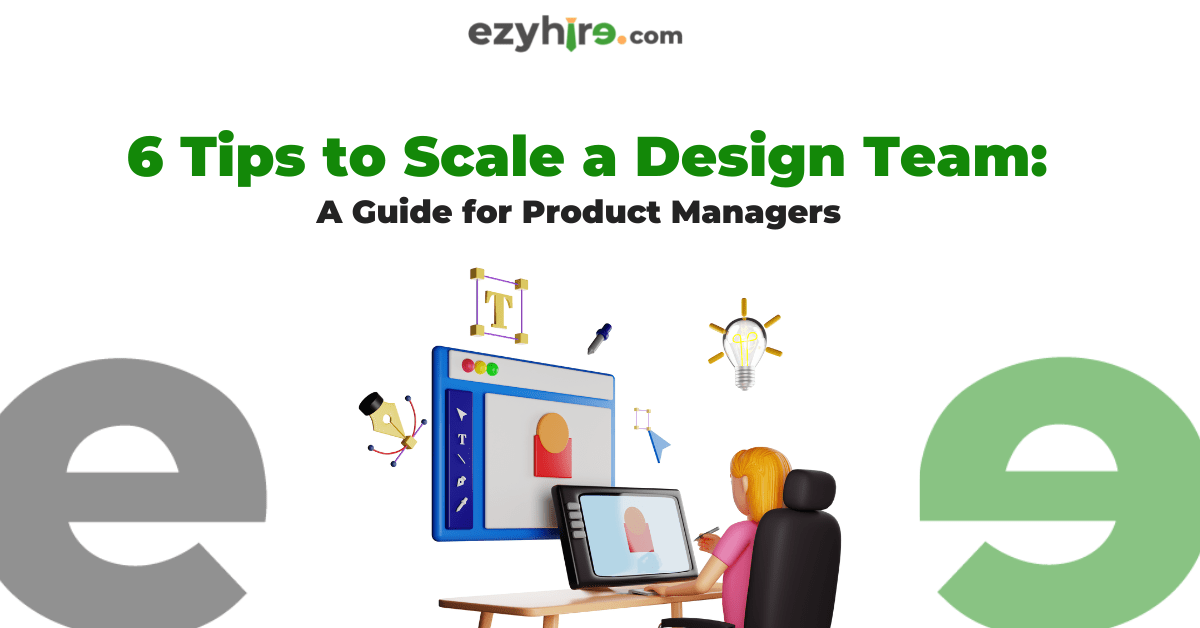Every company knows that interactive design and strong functionality are the perfect combinations behind its perfect product. Every company requires designers to improve their existing products as well as their upcoming products. As the design team is an essential part of any company’s growth and scale, it is even more critical. About 75–90% of companies fail because of the wrong timing and decisions they make to grow.
Here in this article, we discuss the top 6 tips you should keep in mind if you are planning to grow.
Before you begin, make sure you understand the requirements
The productivity of any team is directly proportional to the capabilities of its leader. Before going ahead and hiring blindly, analyze and understand your requirements.
You need to determine the area of expertise you need and the number of people required for the task or project. By doing this, you can keep track of the tasks precisely.
Moreover, if you can understand the requirements and have the end goal in mind, half of the problem is solved. When you can infuse your ideas and vision in your teammates, bringing in the right talent and getting the work done becomes a byproduct.
Make a long-term plan to be safe
When scaling the team, you need to understand your long-term plan and the strategy you will apply to achieve it. Working with a big team also requires a proper plan and workflow. Otherwise, you’re not going to reach anywhere. Things that work with a small team do not necessarily work with a large team. So, as a project manager, you must develop a solid plan as your team expands. You can hire a consultant to organize the process for you, evaluate the project’s current state, and create a transition strategy.
Besides, you should also understand the tasks and technical requirements and prioritize each of them accordingly.
Must know what is more important
As discussed earlier, you must know your tasks and deliverables to understand which tasks are utterly important and what can be delayed. Once you’ve determined the importance of each task, arrange them in accordance with their requirements.
This may appear to be a silly tip, but managing tasks and successfully delivering them to your clients is a work of art.
Find specialists Not Newbies
The team’s success solely depends upon each member’s performance and capabilities. The issues are not always the same. Hence, hiring talent with expertise and experience can make your team successful in the long run.
Relying only on the talents available locally is not enough. Go for international hiring to unlock the full potential of your team. This is especially necessary if your client demands highly technical services like 3D design and software prototyping.
Make an impression with your onboarding
Even if the newly appointed professional is highly talented and experienced, joining a new organization feels weird anyway. To make things easier for the new professionals, you can appoint an internal team member who can guide them through the basics of the organization and the project.
New members must be provided with essential information about the team member’s contacts and mentors.
Below, we are listing a few steps that make things handy while onboarding a new design member to your team.
A welcome note
Prepare a brief introduction template for your team and the project. You can provide it to the new members who are joining your team. Also, don’t forget to give them heartfelt greetings. By doing this, you can set expectations and give the gist of how you work.
A no-tech stroll
Provide a broad overview of the project’s organizational structure, core practices, and standards. Share the project’s short-term objectives and current progress as well.
A tech-full stroll
Tell them about the design principles, techniques, component architecture, and codebase for the project you are working on. Introduce them to the organization’s tools, technology, concepts, and trends in UX/UI design.
Necessary materials
Give them a special-purpose folder with details on current communication channels, Figma sections, meeting times, crucial stakeholder connections, and a project glossary. This folder can also access current organizational diagrams and other helpful information.
A proper KPI motivation
It is pointless if you are working without a goal or a milestone. As a result, it’s always a good idea to set a proper key performance indicator (KPI) to establish expectations and perform performance analysis. Set the goals you want your team to focus on. Working in this manner helps your team improve on a daily basis by providing motivation to complete the project and meet corporate objectives.
The following six steps will help you set effective KPIs for your team:
- Each parameter should be weighed based on its importance to the project’s objective.
- Compare and analyze the parameters of similar employment positions’ sums.
- Review each team member’s job description and make any necessary modifications.
- If they do not already have one, create one for them.
- Choose 5 to 7 crucial responsibilities.
- Establish precise criteria to evaluate the recently allocated work—delivery speed, ongoing progress, and more.
Conclusion
Design is as crucial as any other aspect of any product. When an organization relies so much on design, why not be slightly more cautious when scaling the team?
It’s always nicer to work with a small team, but challenges increase simultaneously when the team’s size increases. Here we have compiled the top six tips that you must follow if you are planning to grow your design team.
We hope you liked this article and the tips we talked about. ezyhire is the ideal platform for you if you want to expand your team and hire a workforce worldwide. Book a consultation with our experts to make Global workforce hiring in India super simple.
